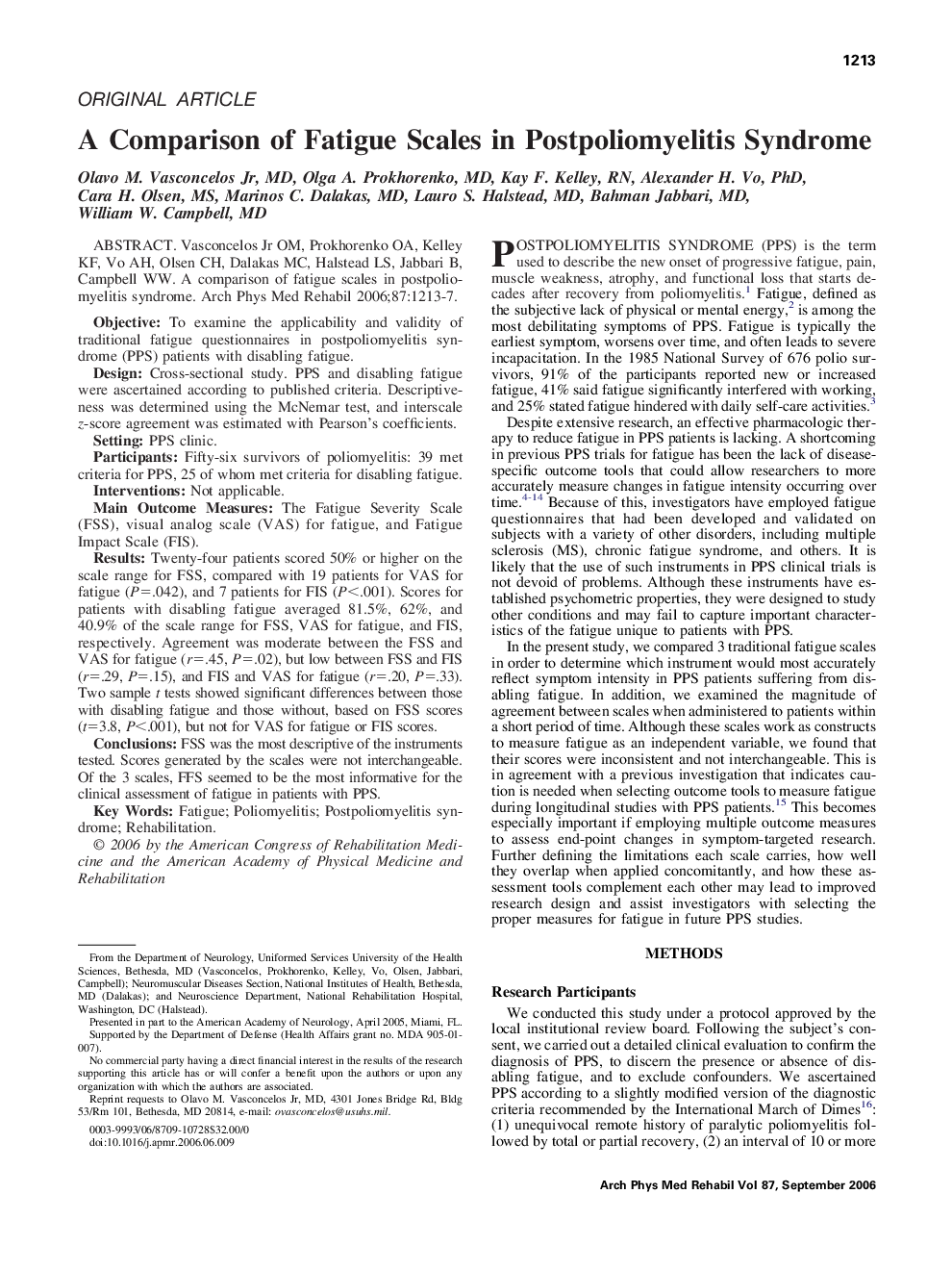| Article ID | Journal | Published Year | Pages | File Type |
|---|---|---|---|---|
| 3453197 | Archives of Physical Medicine and Rehabilitation | 2006 | 5 Pages |
Vasconcelos Jr OM, Prokhorenko OA, Kelley KF, Vo AH, Olsen CH, Dalakas MC, Halstead LS, Jabbari B, Campbell WW. A comparison of fatigue scales in postpoliomyelitis syndrome.ObjectiveTo examine the applicability and validity of traditional fatigue questionnaires in postpoliomyelitis syndrome (PPS) patients with disabling fatigue.DesignCross-sectional study. PPS and disabling fatigue were ascertained according to published criteria. Descriptiveness was determined using the McNemar test, and interscale z-score agreement was estimated with Pearson’s coefficients.SettingPPS clinic.ParticipantsFifty-six survivors of poliomyelitis: 39 met criteria for PPS, 25 of whom met criteria for disabling fatigue.InterventionsNot applicable.Main Outcome MeasuresThe Fatigue Severity Scale (FSS), visual analog scale (VAS) for fatigue, and Fatigue Impact Scale (FIS).ResultsTwenty-four patients scored 50% or higher on the scale range for FSS, compared with 19 patients for VAS for fatigue (P=.042), and 7 patients for FIS (P<.001). Scores for patients with disabling fatigue averaged 81.5%, 62%, and 40.9% of the scale range for FSS, VAS for fatigue, and FIS, respectively. Agreement was moderate between the FSS and VAS for fatigue (r=.45, P=.02), but low between FSS and FIS (r=.29, P=.15), and FIS and VAS for fatigue (r=.20, P=.33). Two sample t tests showed significant differences between those with disabling fatigue and those without, based on FSS scores (t=3.8, P<.001), but not for VAS for fatigue or FIS scores.ConclusionsFSS was the most descriptive of the instruments tested. Scores generated by the scales were not interchangeable. Of the 3 scales, FFS seemed to be the most informative for the clinical assessment of fatigue in patients with PPS.
